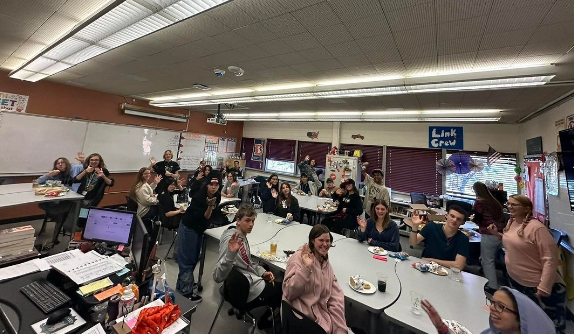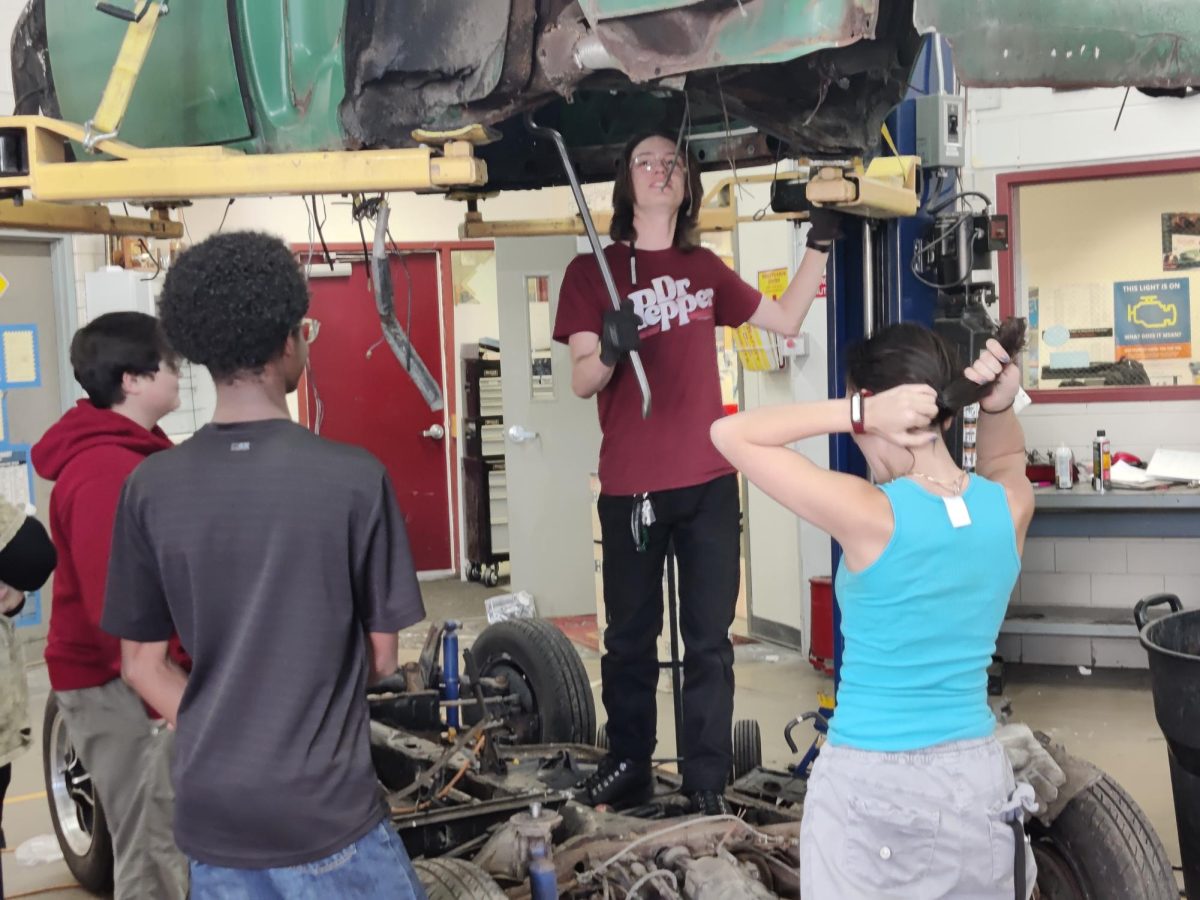The lack of concern for teachers and their families has become a severe issue. The people who help the next generation learn are underpaid and understaffed. Teachers could choose any other job, they have degrees necessary to do so, but they choose to work with students and teach the new generation everything they need to know to succeed. They choose to work in a career that does not pay a livable wage, so people have the opportunity to learn. We can change the salaries by forgiving student loan debt after a set amount of years teaching; while we would spend more, the loan forgiveness would keep teachers in the profession. Teachers deserve not to worry about how they will buy food the next day. Especially when they are doing a job as important as teaching the next generation how to navigate the world, choosing to work with students despite the lack of good pay for their degree, time, and effort should be worth more than what they are making. Teaching is something they have to take home and continue to work on despite what they might have going on in their personal lives. Unlike other jobs, teachers cannot leave the work in the school building; they have to take it with them and continue to work on it at home to grade assignments promptly. Teachers are underpaid when we look at the cost of living by city, the teacher-to-student ratio, and the teacher shortage that is slowly but surely becoming an issue. An issue that the districts and state can solve by making sure that they help students by focusing on the teachers and the loans they struggle under.
In recent years the cost of living in Colorado has gone up exponentially. As the cost of living has gone up, so have the salaries for other jobs, but teaching has been a steady wage, not moving as much as it should. While other jobs have had pay increases, teaching has stayed in the same pay range since the 1990s and even before that if inflation is counted. Recently living in Colorado Springs has become more costly as more people move to live in the city, which has driven the cost of everything up. Based on research from Lauren Foley, “Most financial advisers recommend spending no more than 30% of your annual income on rent. This means you would need to earn around $40,960 per year to comfortably afford a one-bedroom apartment in Colorado Springs.” (Foley). Starting teachers in D11 with only a bachelor’s degree make $40,200, which is $760 less than financial advisers recommend for Colorado Springs. Based on Foley’s research, beginner teachers cannot even afford a one-bedroom apartment comfortably by themselves. Of course, this is not counting a budget for other things, unlike Carrie Nicholson’s research which states that the average statewide salary of $62,000 or $5,384.21 per month is enough to live comfortably in Colorado. Nicholson’s research includes housing, state taxes, utility, food, healthcare, and transportation costs. A District 11 teacher would need to have at least close to a master’s degree and 17- 19 years of experience teaching even to get close to living comfortably by themselves. Now a teacher with a bachelor’s degree and 16 credit hours cap out at a max wage of $53,929 after 14 years of teaching. That is not enough for a single teacher to live comfortably in Colorado Springs as the city grows and expands. As other jobs increase wages, teachers should not be left as people who cannot afford to support themselves.
The student-to-teacher ratio is also a big problem causing teachers to lose one-on-one time with students. The number of students in a class has been found to affect “…the classroom process, course activities, students’ engagement and consequently students’ learning.” (Koc and Celik). It indicates how successful a class will be and how comfortable they get. The time a teacher can spend with a student is hugely affected by how many students are in their class. A lower quantity of students per teacher will improve teacher participation and be more tailored to the students’ needs. This hypothesis is proven by the Hun School of Princeton, stating, “a lower ratio will lighten the workload for teachers, enabling them to focus on the quality rather than the quantity of their teaching and grading” (The Hun School). In both studies, it was shown that test scores and graduation rates go up when there are fewer students in a classroom; “The negative correlation indicates that as the average number of students per teacher decreases, a city gets a better ranking [when it comes to testing]” (Koc and Celik). Finding the perfect balance of teachers to students is a challenge, but there is a case where improvement is seen. Students seem to advance further when there are 15 students, or less per teacher, as students are more willing to ask for help and teachers have more time to give it. Paying teachers more will encourage people to enter the teaching profession, lowering the student-to-teacher ratio. Paying teachers more benefits the teachers and their lives, but it has also benefited students.
As we have seen, a teacher’s salary is not enough, and it is one of the contributing factors to the teacher shortage schools are currently facing. Solving this problem is vital to the next generation’s knowledge, and it is not impossible to solve. One solution is districts, states, and the federal government offering loan forgiveness programs as an incentive for people to get into teaching. According to Carver- Thomas, “Service scholarship and loan forgiveness programs that pay the cost of teacher preparation in exchange for a commitment to teach in a subject or location of need for 3–5 years can help retain teachers in two ways: (1) they provide the financial incentive for teachers to continue teaching, and (2) they draw prospective teachers into the workforce through high-quality preparation programs associated with greater teacher retention” (Carver- Thomas, Darling- Hammond). Schools are getting much-needed staff, and that is one less thing teachers have to worry about paying. Student debt is a big worry about entering a profession. People do not want to spend the rest of their lives under debt, so if we have an exchange program where teachers teach for a certain amount of years to forgive student loans, people would be more willing to stay and teach. Based on the Learning Policy Institute’s research, “Evidence shows that willingness to enter a lower-paying field is tied to the level of debt candidates must carry” (Podolsky, Kini, Bishop, Darling- Hammond). There is proof that a program made to forgive student loans will gain a higher requiting rate and retention rate, which will, in turn, bring higher-quality teachers to the field. More teachers will be more accessible, which will lower class sizes and give students more one-on-one help, so everyone gets the help they need to be successful. With the program, teachers can be pulled to where they are needed, like low-poverty areas, which also benefit the students. Forgiving student debt is one of the best ways, studies found, to keep teachers in the field while helping low-income students that need the extra help.
While paying teachers more is the end goal, being able to start a student loan forgiveness program is one of the best ways to start. It is one less thing future teachers have to worry about, which encourages people to stay in the field, even if the pay is not what they were expecting. In addition, the exchange program will solve how many students are in a classroom by encouraging more people to become teachers and providing more student aids. Focusing more on teaching and students than how the rent will get paid is essential; and having one less thing spreading salaries thin is one way to do that. The issue of teacher pay and the teacher shortage has been happening since the 1990’s, teachers are one of the most important parts to a community. Not paying them what they are worth or even putting in the effort to pay them a livable wage affects the children in a community. It becomes an issue when the teacher shortage continues and students grades and test scores are affected because they cant get the help they need. Luckily there are multiple ways to solve this issue if we could start an experimental organization to help forgive teacher loans.
Work Cited
Carver-Thomas , Desiree, and Linda Darling-Hammond. Teacher Turnover: Why It Matters and What We Can Do About It, Aug. 2017, https://files.eric.ed.gov/fulltext/ED606805.pdf.
Foley, Lauren. “The Cost of Living in Colorado Springs in 2021.” The Rent.com Blog : A Renter’s Guide for Tips & Advice, 16 June 2021, https://www.rent.com/blog/cost-of-living-in-colorado-springs/.
Koc, Nizamettin, and Bekir Celik. The Impact of Number of Students per Teacher on Student Achievement, July 2014, https://www.sciencedirect.com/science/article/pii/S1877042815016894.
Nicholson, Carrie. “The Cost of Living in Colorado: Is It Expensive to Live Here?” Hashtag Colorado Life, 16 Nov. 2021, https://hashtagcoloradolife.com/cost-of-living-in-colorado/.
Podolsky, Anne, et al. Solving the Teacher Shortage, Sept. 2016, https://files.eric.ed.gov/fulltext/ED606766.pdf.
“Student-Teacher Ratios: Everything You Need to Know: The Hun School.” Student-Teacher Ratios: Everything You Need to Know | The Hun School, Dec. 2019, https://www.hunschool.org/resources/student-teacher-ratios.





